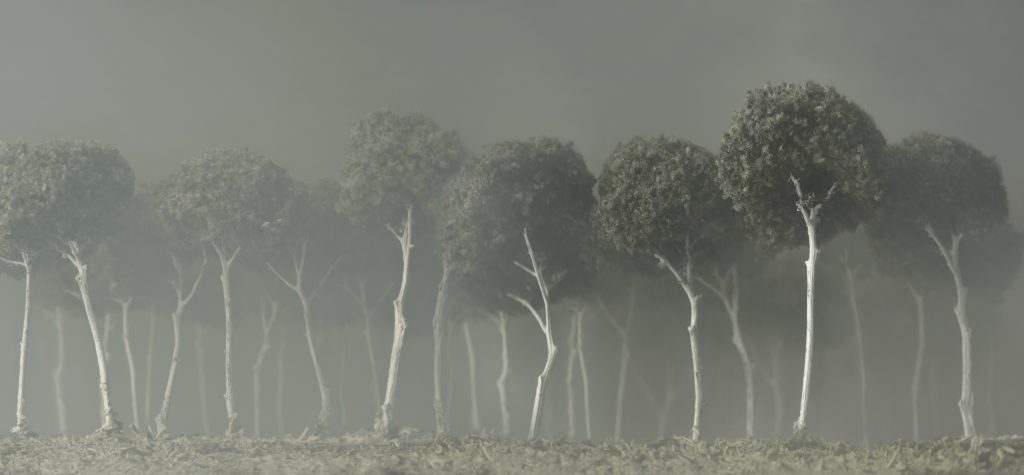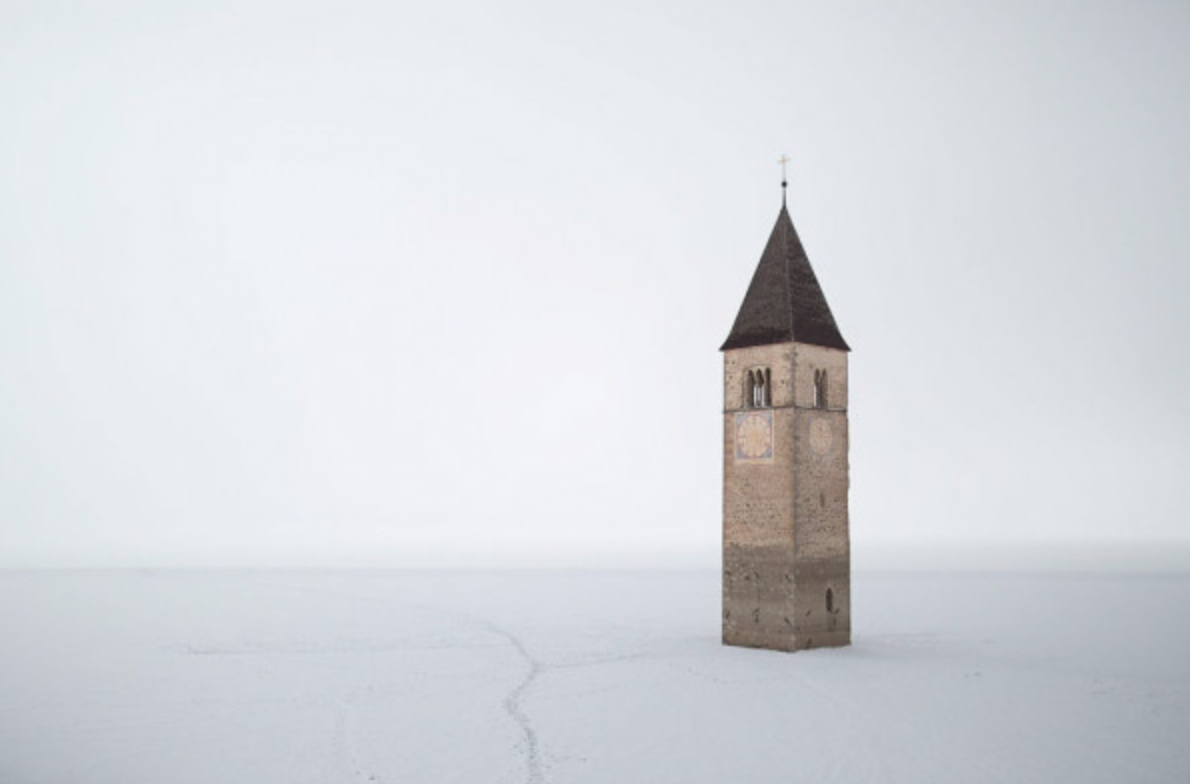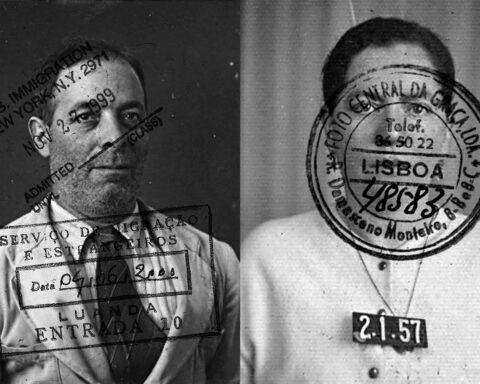Silvia Camporesi, photographer, winner of numerous awards tells us about her way of narrating through images. Each work is a discovery for us, because her way of seeing reality is almost a dream, a journey to places mostly unknown to the general public. Her role as a photography artist evolves to anthropology … a unique way, made of delicacy, sensitivity and beauty to hold our landscape, our history, who we are, in one click. In this interview in dialogue with Silvia I was inspired by several authors, one is Gabriel Marcel with Homo Viator, a great work, of which we will take only part in which life is that substrate given by the pilgrimage, exploration, migration. Fundamental characters for self-discovery, in which every photo of Silvia leads us to a longing for sentiment.

Silvia Camporesi: I usually start from a subject, a theme that comes from some reading or a commissioned topic.
At the beginning there are few words, small notes in a notebook that during the weeks of work become increasingly voluminous material made of images, drawings, other notes, until you get to a real work program: if it is images to be realised at the table, the pre-production part ends with the storyboards on which I will reason for the realisation of the final image; if instead it is about going out and taking pictures of real places then all the commitment is in the organisational part of the trip. I tend to register everything in a notebook in order to keep the production process, from the idea to the finished image, as close as possible. Over the years I have developed a very precise working method and I translated it into a workshop that I brought to various cities: “Making Art. Creativity and planning in photography”.
Marika Marchese: Just thinking about your projects, looking for these “magical” places, places sometimes forgotten, others outdated by everyday life, sensitivity and delicacy with which you prepare to remember. I would like for you to share your creative path of the idea and if you see yourself as an explorer, as in the work of the anthropologist Marcel.
S.C.: I see myself as a two-level explorer: first of all I start from the idea (and, to talk about the work I’m carrying out now, the idea is the search for Italian places of great charm but little known to the general public), then I fine-tune the selection of places to visit. I ask for permits where necessary and I organise targeted trips trying to unite various stages. I first look carefully at the places on the internet, so that I already have clear ideas when I arrive. I choose places where I like to go, trying to restore the aesthetic experience I feel when I visit them; so yes, maybe I feel closer to Marcel’s work.

M.M.: How did it all start? Did you have an enlightenment, a sudden revelation?
S.C.: Actually, I have always known that I am creatively driven, even as a child. I remember that at the age of 7 I made a deck of miniature playing cards for my Barbies, but I spent a lot of time figuring out what shape my desire would take. I wrote poems, stories, I tried music and finally I came to photography. I felt that this was my ideal tool, the means by which to express the inner world externally, was what I was looking for.
M.M.: The art of colouring by hand, was a technique of the first photographs and the pre-cinema’s films, which have fascinated many artists, one of them being the contemporary Youssef Nabil. How did you approach “this care” of the image? I call it “care” because it is a kind of wisdom, of love, of understanding that you have for that determined “shot” (you are taking an image from reality and you are making it yours, giving us your vision of that particular moment).
S.C.: The manual colouring was designed to give meaning to the images of Atlas Italiae, a long series of abandoned places in Italy. These were images of peeling walls, dilapidated buildings, a literally faded and worn matter, so I thought of the colouring as an act of care, of “restoration” of the abandoned landscape. Colouring was also bringing back to life, restoring strength, to those painfully abandoned places.

M.M.: And what was the first picture you did?
S.C.: The first image I coloured was the photograph of a glimpse of the island of Pianosa (an island largely abandoned), of a very small size, a proof therefore, and the result was surprising: seeing the picture in black and white that slowly took on colour and consistency.
M.M.: What kind of lighting do you choose for your works? Is it often natural? On a philosophical level, light was captured around the 12th century, the same century Euclide’s work on “luminous geometry” was translated. These concepts will be taken up again by Augustine’s “Theory of Illumination and Divine Ideas”, uninterruptedly transmitted in medieval thought.
S.C.: Light can be joy or frustration for those who work with photography. If I work outdoors, as it is happening in recent years, I carefully inform myself about the weather in the areas where I have to go, in order to avoid too strong of lighting. I tend to not love the strong light of the sun, I prefer a veiled sky and, as already said, cold shades. The idea of manual colouring was also born to manually adjust the different lights that I found in the various places visited in Italy. If I work in the studio it’s obviously easier, I can keep the lighting under control and have the effect I want.

M.M.: What was the first museum of your childhood?
S.C.: I remember when I was very young when I visited the museum of ancient musical instruments with my parents, a magical place, of objects with unusual shapes that played wonderful melodies. Then as a teenager the first “real” museum exhibition: I went to Lugano with my mother to see a retrospective on Francis Bacon (I still have the catalogue) and that was the first falling in love.
M.M.: Are there instead artistic movements with which you feel you have something in common? Or who gave you particular strength?
S.C.: Until about ten years ago I was fascinated by the Pre-Raphaelite painters, for their way of representing the female figure immersed in a
timeless nature. Their works have inspired some of my photographs, in addition to the declared homage to the Millais Ophelia that I made in 2004. In recent years I have completely abandoned the human figure to devote myself to research on the Italian landscape, which is why I became interested in the authors who have recounted Italy in various eras and circumstances. Surely the group of landscapers gathered around the figure of Ghirri in the production of the Journey in Italy is always a reference of great value that still resounds in those who do research on places.

M.M.: Are there women in art, in cinema, in poetry, in literature that particularly attract you? What did they leave you?
S.C.: There are many female figures who have somehow influenced me during my studies in philosophy and in all the years of training as an artist. The spiritual reflections read in the Quaderni by Simone Weil, to whom I dedicated more than one work, and then the Italian Cristina Campo, lucid explorer of the word, of which I loved every song. The poetry and prose of Antonella Anedda have accompanied me in the most complicated moments of life and in regards to photography I cannot ignore the feeling of uniqueness and strength that triggered me upon the first vision of the photos of Diane Arbus; even if my work does not seem to have points in common with her images, I have to admit that I have always been strongly influenced by all that I have learned of her biography and her work over time.
M.M.: What books have changed you, if they did?
S.C.: Many books have directed me to certain paths and therefore have determined in me changes at various levels; I can tell you that the last, in order of time, is a very recent book. I’m finishing it now (it’s a tome of almost a thousand pages) and it’s 4 3 2 1 by Paul Auster, an author that I love very much. It tells the story of a boy and his family in four different variations – all credible and “working” – and makes me reflect on how each artistic idea can be developed in many different ways and can therefore take multiple directions. The doubts, the changes in perspectives, the false departures, the uncertainties – in the metaphor with the book of Auster – all enter the machine of the creative process bringing wealth and complexity to the ideas.

M.M.:“In the possible everything is possible,” in art what is still possible? What project would you like to create?
S.C.: I think that the possible in art comes from the elaboration of already existing material; a new attribution of meaning to something that already exists or, in line with current times, an art increasingly exposed to technology. I definitely prefer the first possibility. A project that I’m carrying forward in time, comes from the idea of putting your hands on the material collected over many years: documents, texts, stories, photographs, dedicated to the theme of the unusual, the supernatural, the absurd. Starting from this material I create, in the studio, models of the places where particular events happened and I photograph them in perspective, simulating a real existence.
For me this is a way to always be mentally present and have a creative line that goes on in time, while I carry on other jobs as well. In general, it is the project of artistic continuity that I am interested in keeping alive, a constant mental vitality.
M.M.: You said in other interviews that you want to discover cold landscapes. Are there places or cultures that you would like to bring to photography?
S.C.: Surely after finishing the new work I’m doing in Italy I’d like to do a project on Northern Europe.
Thanks to Silvia Camporesi for her kindness and availability.







